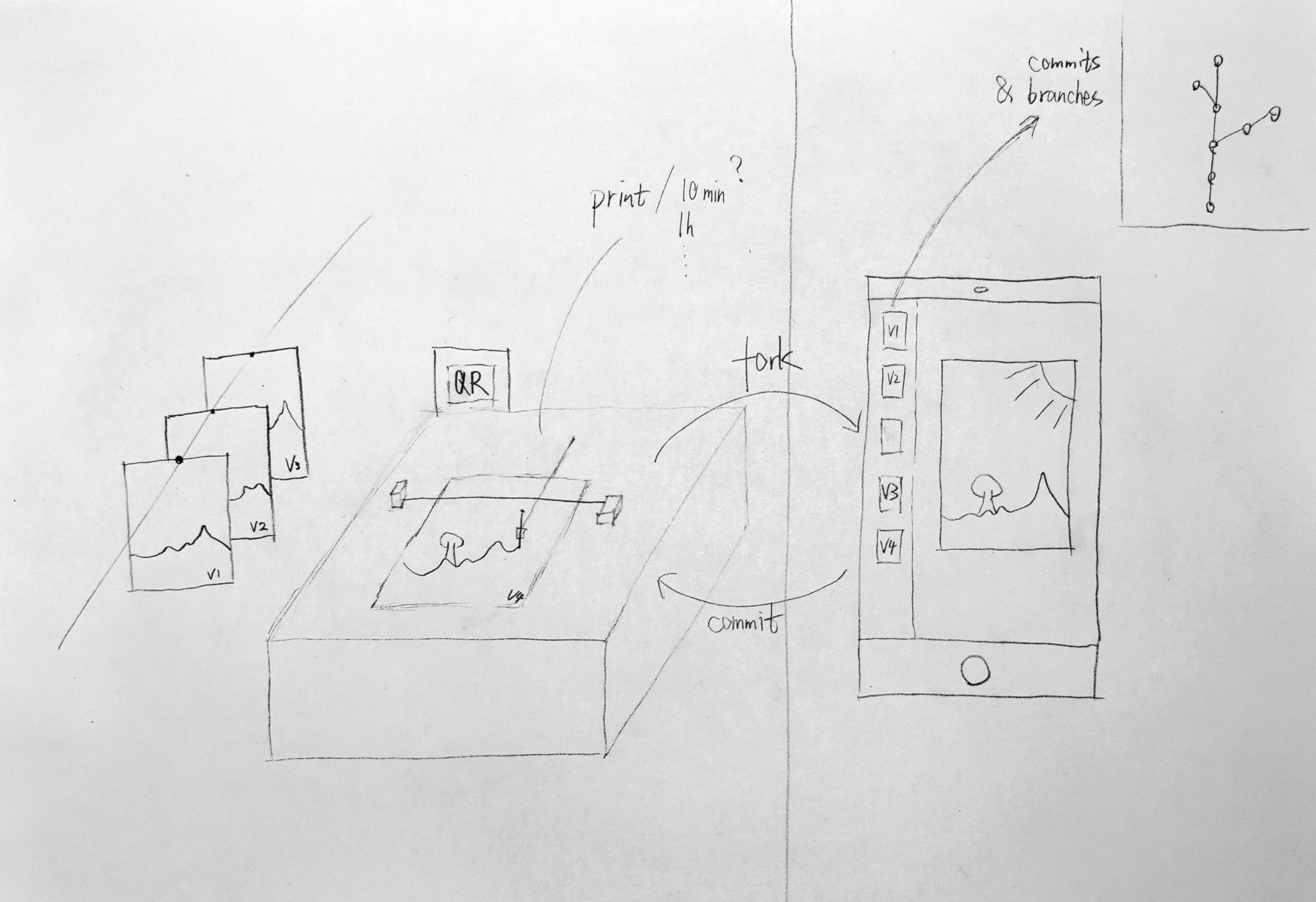The Magic of Forcing Functions – Show-A-Thing follow up
Stream of consciousness again, apologies if things aren't coherent:
“In the future, it’ll be much harder to tell where the human stops and the machine begins”
Both Show-A-Thing and Mentor meetings were enormously helpful for me. By forcing myself to communicate my project concept to multiple different people from multiple different backgrounds, I was able to hone in on the parts of my project that felt solid and consistent. Currently, I’ve landed on the following concept:
I am trying to understand the philosophical theory behind “The Sublime” and focus on connecting those ideas to the state of modern technology. Specifically, exploring ideas of infinity through Machine Learning and Large Language Modeling.
The Sublime is traditionally defined as “the exalted”, a feeling of beauty that is grand and dangerous¹. There are many philosophers who attempted to define the sublime (Kant, Schiller, …) but there are two distinctions that define early Romantic perspectives on the feeling:
- The Mathematical Sublime – An understanding of the universe’s scale and our insignificance
- The Dynamic Sublime – Our understanding of the universe’s power, and our awe and fear
As technology has progressed, we have come to shift our source of the sublime from nature to technology. It is still possible to feel close to the sublime in specific parts of the world (Grand Canyon, Niagra Falls), but as our control over the environment increases we find our control over technological systems to weaken and weaken. This feeling will increase exponentially as time continues, as our built environment multiplies in complexity.
Here are some slides of the visual and conceptual thinking I shared during the sessions this week:
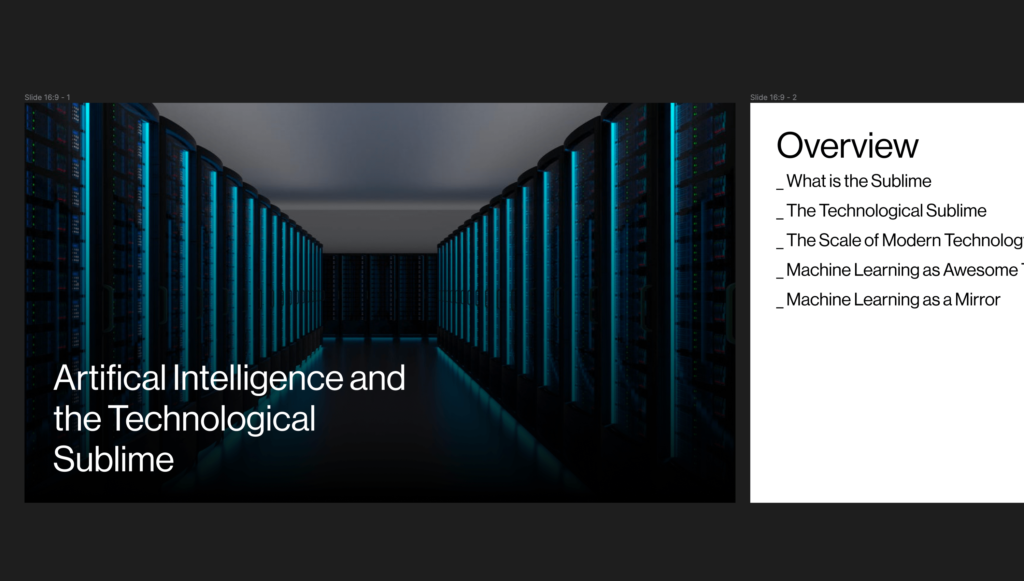
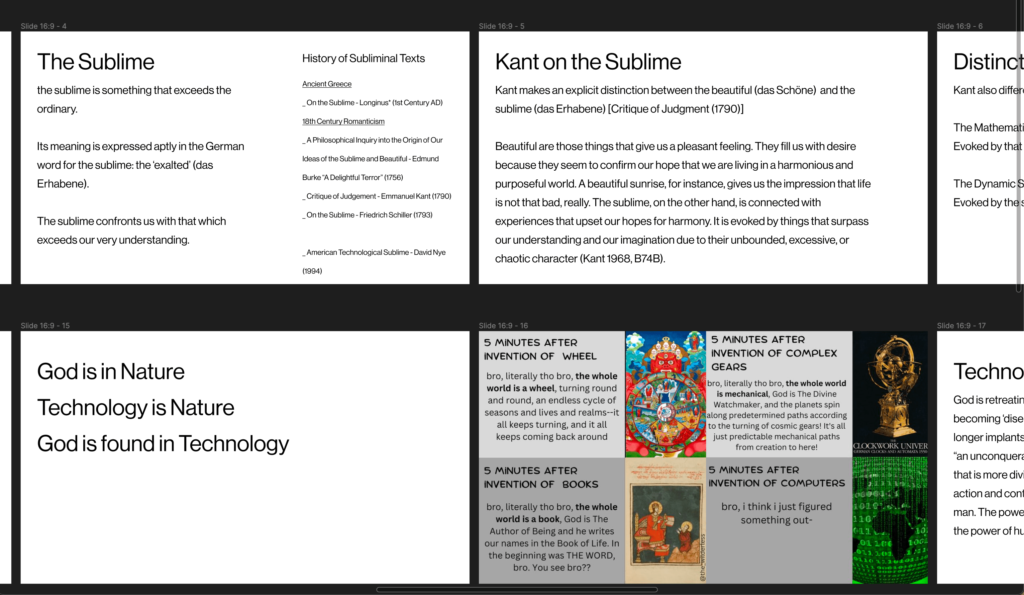
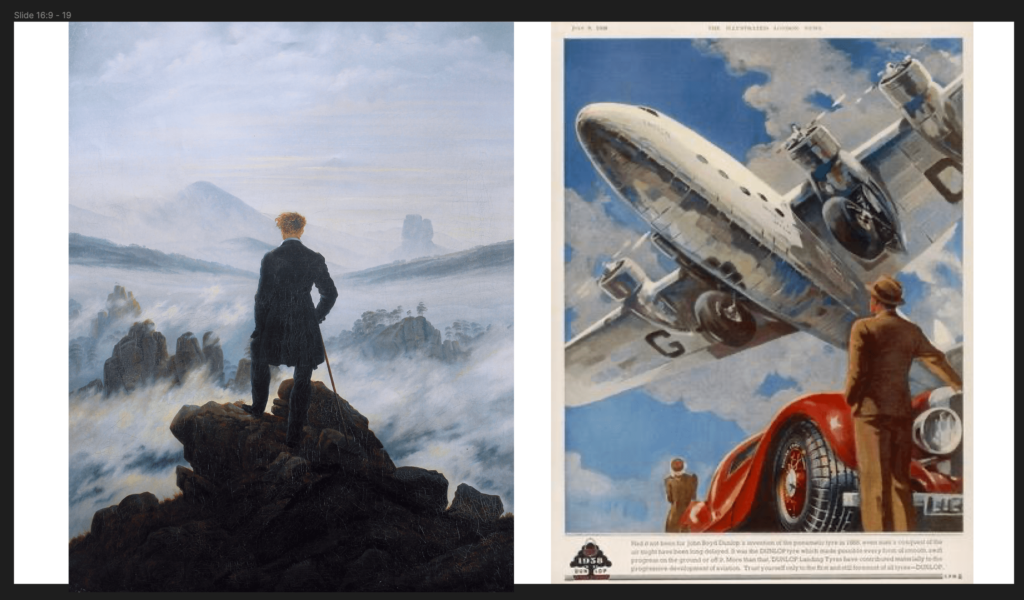
I know I want to try and tap into the sublime using machine learning and generative media, so I’m prototyping the following concept:
Voicemails from the Sublime: Machine Learning as a compass to navigate collective infinities
I want to explore Large Language Models (LLMs) as material for simulation, to bring attention to the size and scale of the technology’s possibilities as well as be a reflection of the scale of the human collective.
With this project, I’ll use LLMs (GPT-3/4), Text-To-Speech, and Physical Computing to explore simulated realities. These simulated realities aim to:
- Explore early Romantic concepts of the mathematical and dynamic sublime
- Talk to ideas on consciousness, intelligence, and embodiment through simulation
- Question how AI and ML will redefine what it means to be human
- Draw attention to the scale and complexity of modern technological infrastructure
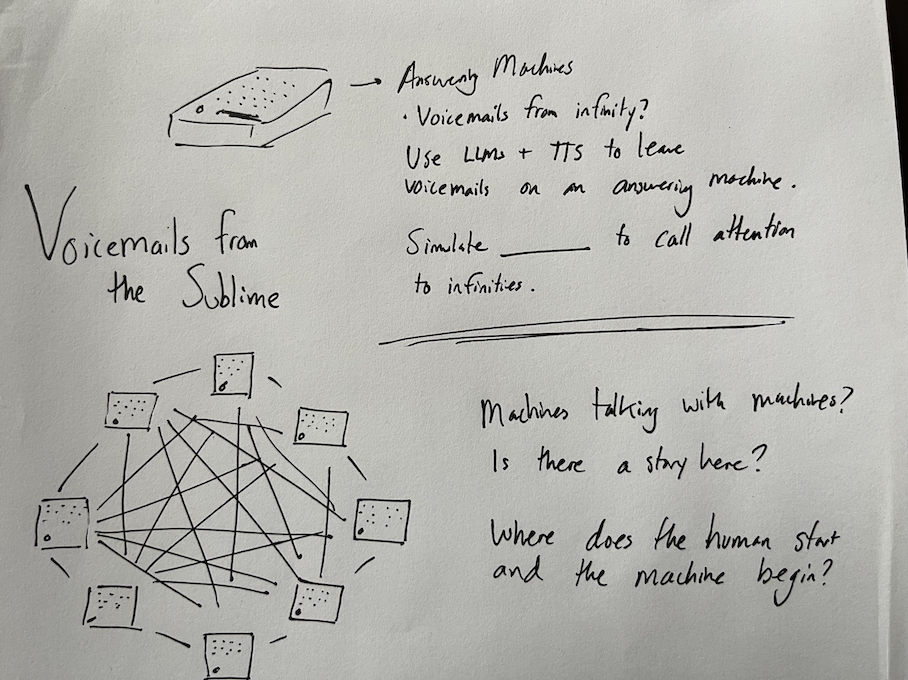
Prototyping Summary:
Testing prompt generation of the following script:
Prompt:
const voicemailPrompt =
`Generate a voicemail a grandmother would leave on her grandson's phone.
The grandson has a generic male name.
The grandmother hasn't heard from him in a long time and wants to see him for easter."
`
Example Generations:
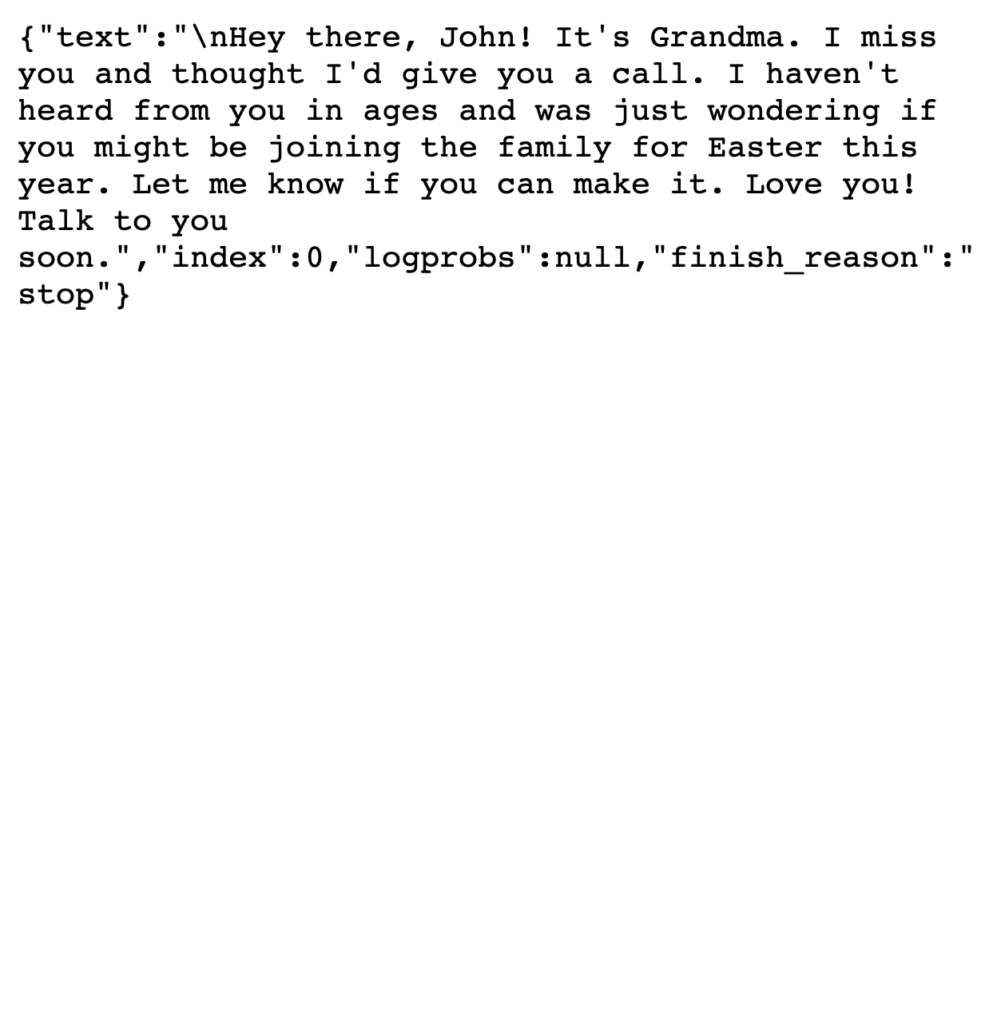
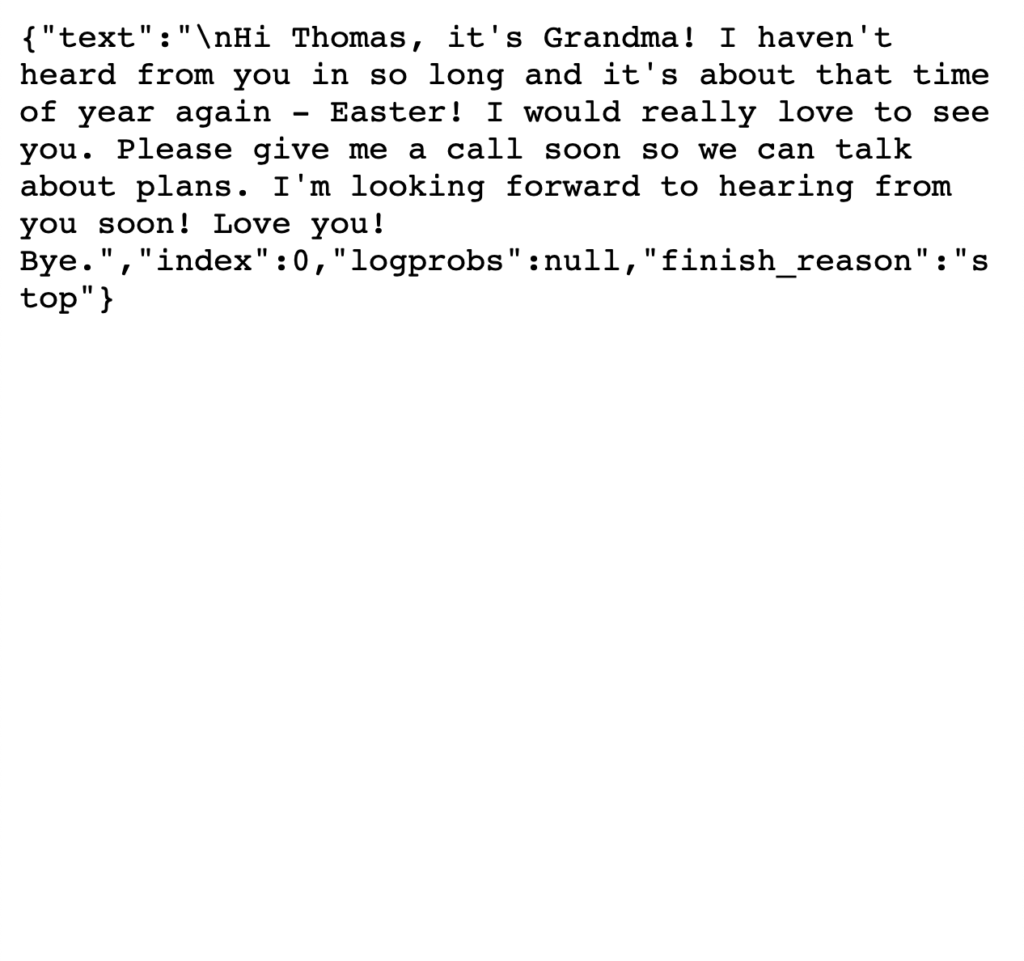
Testing Text Generation –> Audio Generation
Audio Player
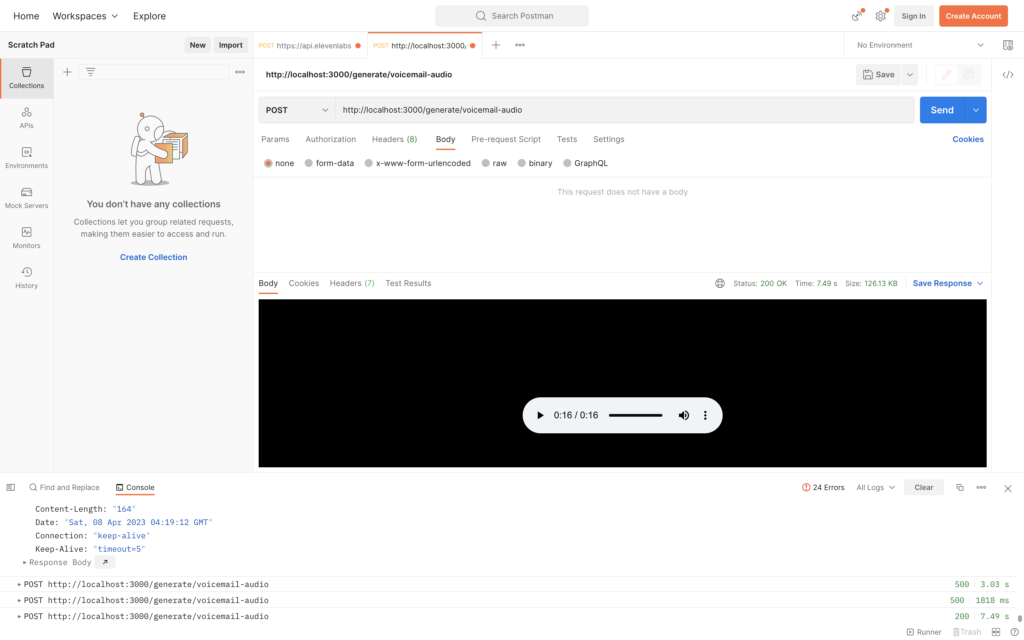
This is with the first generic voice, and you can easily change/train your own models to customize it. I’ve also written code to run this generation pipeline on my own, so I can easily type in a name/topic, and have the model generate a voicemail and accompanying audio recording:
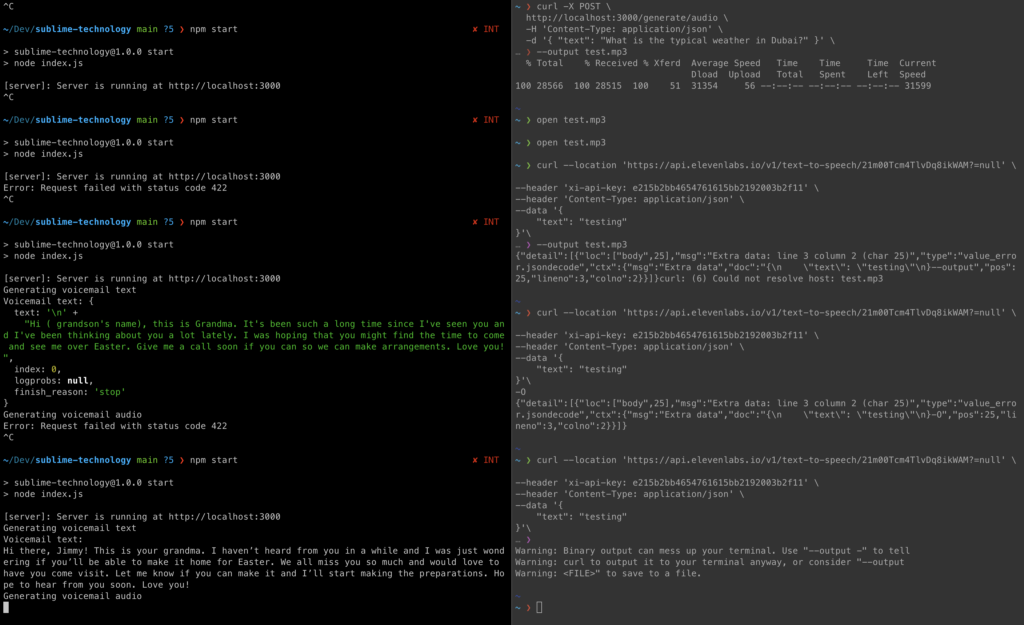
Doesn’t feel too “S U B L I M E” yet but at least the pipeline is working to go from Text to Voice output.
Also I’ve been using GPT-4 to write everything and it’s been amazing for productivity. Will continue hacking this weekend and make another post. I want to do some prompt engineering to get more interesting output from the model, and see if I can generate a bunch of text/audio pairs.
References:
- https://www.nextnature.net/story/2011/the-technological-sublime
- Figma Slides: https://www.figma.com/file/ruwB0T8Nx6TagewOJGwl6A/Sublime-Technology—Talk-Overview?node-id=6%3A94&t=nvByZ5tLXhW39zn1-1
- TTS API: elevenlabs.io
- LLM: GPT-3.5
 Class Playlist
Class Playlist 